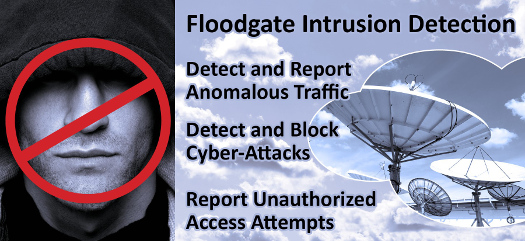 |
| December 27, 2016 | Volume 12 Issue 48 |
Designfax weekly eMagazine
Archives
Partners
Manufacturing Center
Product Spotlight
Modern Applications News
Metalworking Ideas For
Today's Job Shops
Tooling and Production
Strategies for large
metalworking plants
Intrusion detection for the IIoT:
How do we detect threats on the factory floor?
By Alan Grau, President, Icon Labs
The Industrial Internet of Things (IIoT) provides manufacturers in all industries with greater connectivity that, in turn, generates valuable information and intelligence regarding operations. By leveraging this intelligence, they are able to attain significant efficiencies and manufacturing improvements.
However, this expanded network also opens up these newly connected devices to significant threats of cyber attack. As industrial facilities become more connected, hackers are getting more sophisticated, resulting in greater vulnerabilities and increased risk of devastating cyber attacks. Intrusion detection, the ability to detect when hackers begin probing devices, is a critical first step to building a secure IIoT.
IIoT vs. IT, a security POV
Some question the difference between the IIoT and IT from a security point of view, but they are different for several reasons. First, with IIoT, you have a much larger attack surface. There is a proliferation of connected devices, and every new device brought onto the network is a target for hackers. Second, many of these devices are deployed outside of the current IT security perimeter. This creates significant new security challenges. Finally, many of the IIoT devices are embedded systems operating in the cyber-physical realm, which makes protection from cyber attacks critical. Because they are embedded systems, they require new security solutions; traditional IT and PC security approaches won't work on these specialized devices.
If an IT system is hacked, the consequence is usually data loss. This can be significant and costly. However, if an IIoT system is hacked, the damage can be much more serious, even life threatening. The power grid can go down, flights can be grounded, production lines can be shut down, machines can go out of control, and real physical damage can occur. For example, a blast furnace was damaged in Germany due to a cyber attack. This caused significant financial loss and could have caused injury or loss of life.

Intrusion detection
Intrusion Detection Solutions (IDS) for IIoT need to be customized to the nature of the devices. Small devices with limited resources need a solution tailored to the types of attacks they are likely to experience without overwhelming the limited memory and computing resources of the device.
At the same time, the sophistication of the Intrusion Detection Solution must scale up to support more powerful gateway and control systems. As a result, it is necessary to build a scalable framework that can support a wide range of devices and can be easily customized based on the needs of the individual device or network.
In all cases, the key is to monitor for, detect, and quickly report anomalous traffic. This requires integration with a security management system where IDS events can be sent and viewed by a human (or potentially an artificial intelligence engine) to determine if the anomalous events indicate a cyber attack.
Changing attacks
To keep up with the current attacks and all aspects of cyber-security countermeasures requires a team of experts. Today, many OEMs are designating an internal cyber-security champion to work with outside experts and cyber security firms to coordinate their solutions and ensure they are staying current and building appropriate solutions. One of the key elements to a robust solution includes using a hardware platform with hardware security elements as a foundation and implementing secure firmware updates so devices can be updated as security patches become available.
Conclusion
Attackers are becoming more sophisticated over time. They are learning about new vulnerabilities and developing automated attack tools to exploit those vulnerabilities. There are cyber criminals who build and sell these attack tools, making them available to anyone willing to pay for them. Unfortunately, there are a large number of bad actors with the motivation and means to launch sophisticated cyber attacks. They have made millions stealing data from IT networks, and they are beginning to turn their efforts toward IIoT devices and networks.
Icon Labs was named a 2014 Gartner "Cool Vendor" and 2015 Gartner "Select Vendor," and is focused on creating The Internet of Secure Things by providing a security for even the smallest IoT devices.
Published December 2016
Rate this article
View our terms of use and privacy policy
